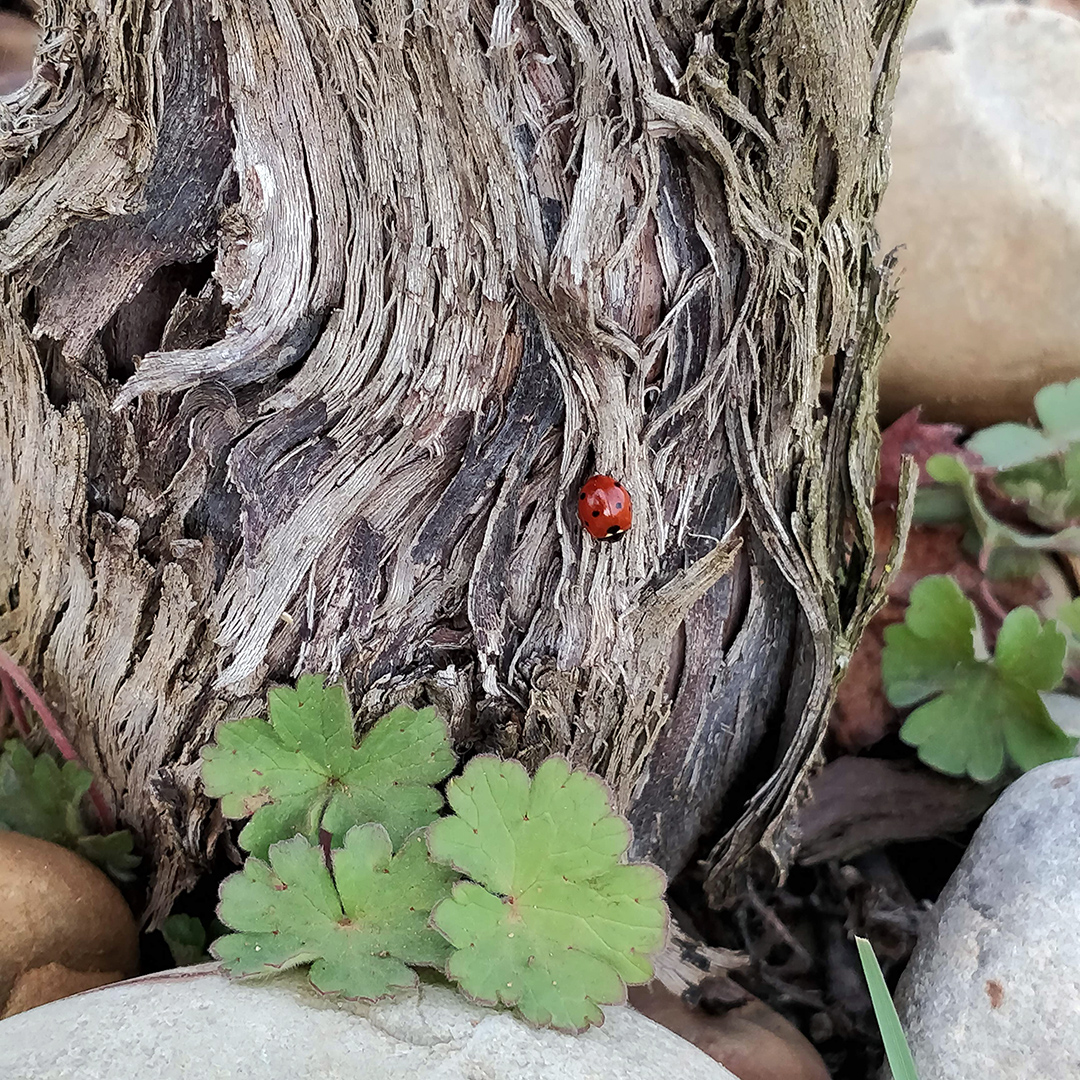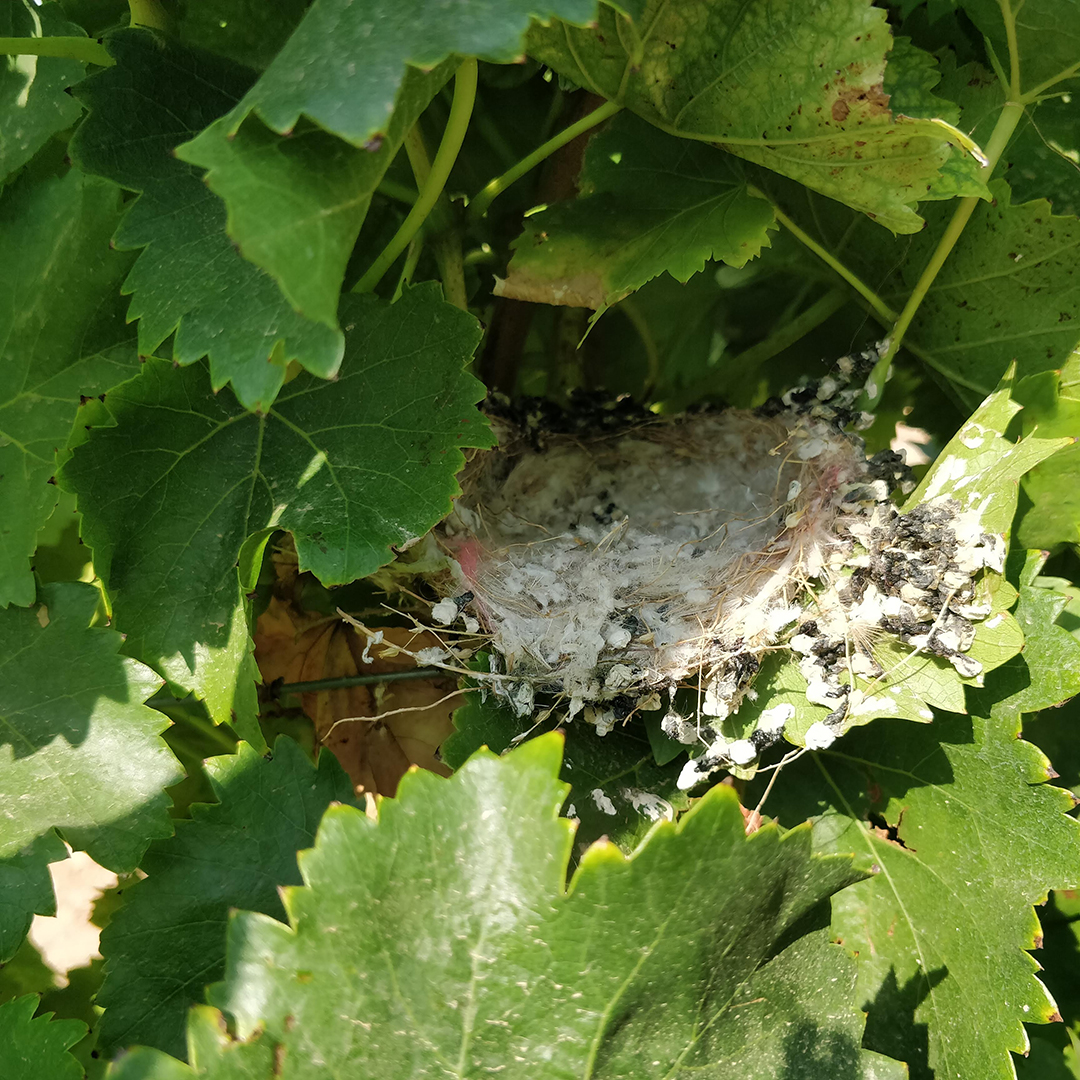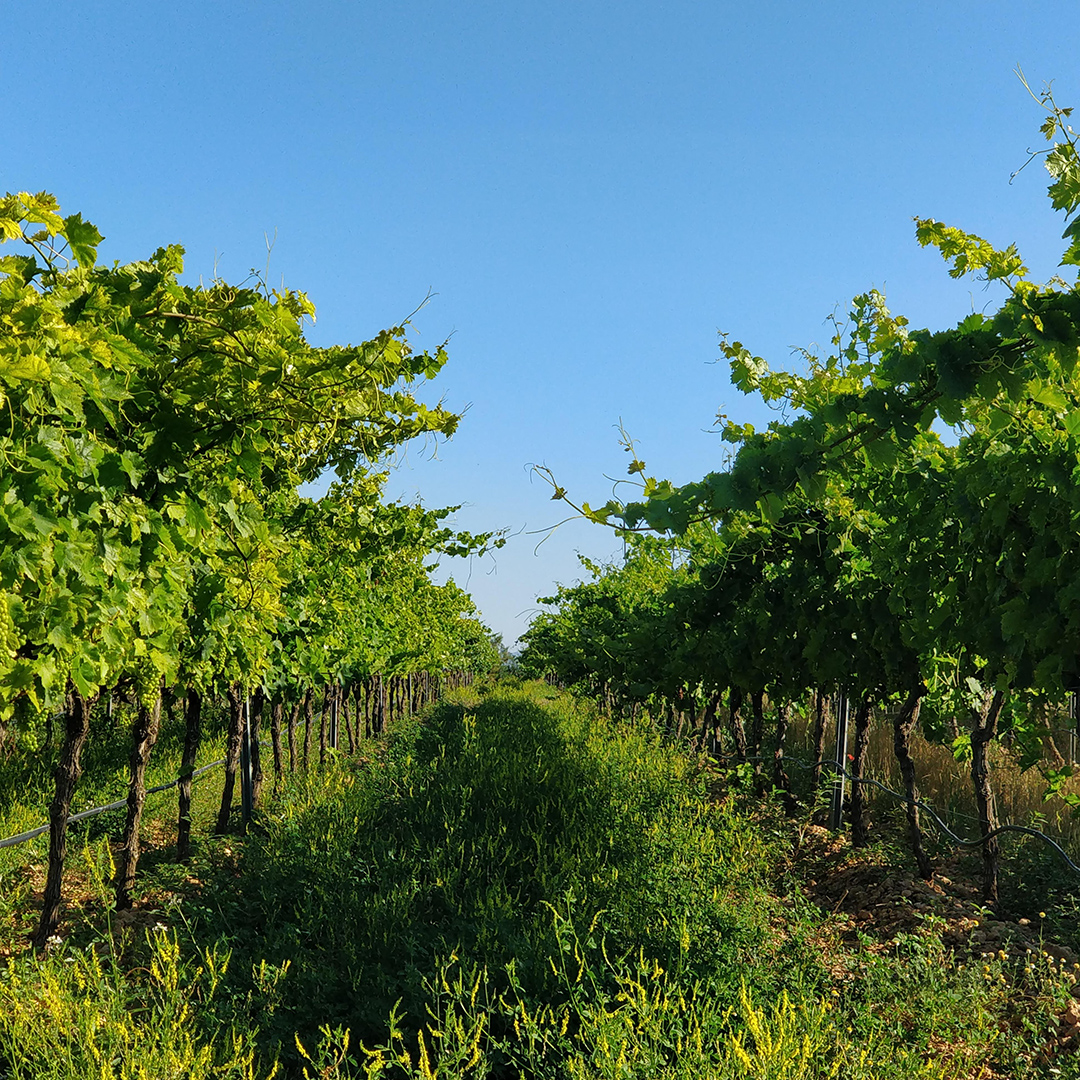The inhabitants of the vineyard - Enozentrum

The inhabitants of the vineyard
Did you really think that only grapevines were to be found in a vineyard? If you're at Enozentrum, then take a look at the panel in front of you and you'll see that, in a vineyard, the grapevines are just part of the ecosystem. If this isn't the case, then carry on reading...
And come along with me on a walk through the vineyard. You need to be attentive, open your eyes wide and be as quiet as possible. Shall we start? We gradually go in, slowly, and the first thing you'll notice are the grapevine plants. That's perfectly normal, given that they're the protagonists. And, as such, they rise up in the middle of the space that you're looking at. But, let's move on, not letting ourselves be blinded by their slenderness.
“Gosh, there's grass between the grapevines!” Oh, yes. That's right. It's not always left. It's often cleared. However, if the vineyard characteristics make it possible to keep the soil covered with grass (technically termed “cover cropping”) then it can be better tended and, moreover, it provides food and shelter for many other living creatures, such as insects or even much bigger ones, such as hares.
"OK but,... what's the big deal in offering food and shelter to these critters? Isn't it about tending the plants?” Of course. But don't forget that the vineyard is an ecosystem. And, as such, it is sustained by the many different relationships between the creatures inhabiting it, including the fact that some living creatures feed on others. Eating them or parasitizing them.
Look, squat down carefully, so you don't frighten it. Can you see that ladybird? Look, its going over to that plant infested with aphids. It's got one and it's feeding on it! Look how it devours it. That aphid will no longer be able to attack our vines. Now can you see what I'm getting at? If there were no other living creatures to control the aphid population, it could get so high that it would be damaging to the plants. Because aphids suck the plant sap, which weakens the vines.


While we continue our walk, do you notice anything between the vine leaves that attracts your attention? "It looks like a nest?" Yes that's right! It's a birds nest. The leaves protect it from the sun and from attacks by other living beings. The plant protects the bird, but the bird also protects the plant, given that many birds feed on insects.
And some insects use the grape clusters for breeding. Look at this grape, can you see the small hole in it? It's the exit hole of the larva of a moth that lays its eggs in the grapes. It's known as a grape moth. And it's a problem because it's an entry point for fungi which leads to grape cluster rotting.
But, don't start getting worried. Don't give the cluster up for lost.
Because fungi can't grow in any situation. They need the right environmental conditions to develop. And, as you know, humidity is one of the most important ones. Without environmental humidity, or if we ensure that there is a good circulation of air around the clusters, by controlling the vegetation around them, for faster drying in the event of humidity, then the fungi will have nothing to do.
As you can see, our actions on the vineyard also condition the presence of other living beings, either by limiting or promoting their presence.
Let's carry on with our walk and we may even see plants showing symptoms of virosis. Yes, let's go! Plants are also attacked by virus. Virus which, in the case of the grapevine, are transmitted either by nematodes or insects. In the same way as mosquitoes are able to spread certain diseases to humans by biting them. And, just as is the case with humans when attacked by a virus, the plants also weaken.
Can you now see that a vineyard is not simply made up of grapevine plants?
I'd like to invite you to leave this imaginary vineyard and visit Enozentrum to learn about more vineyard inhabitants. Even better! Go and visit a vineyard and discover them first hand.
But remember to go in slowly and with all your senses on the alert.
